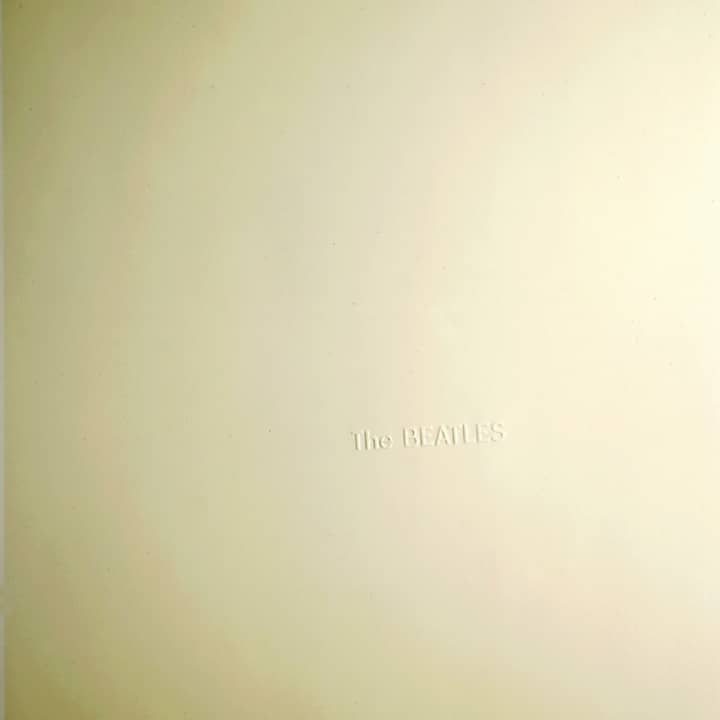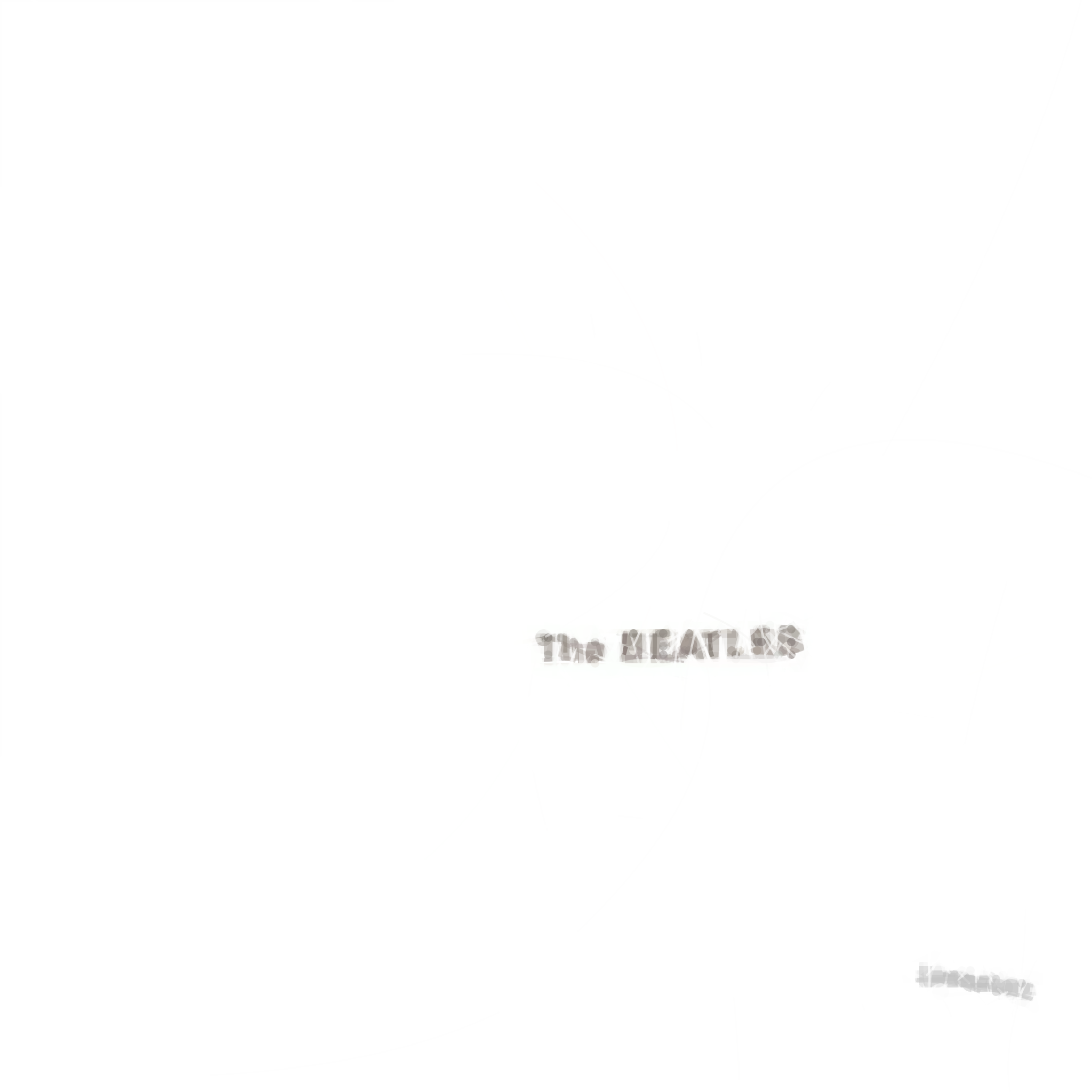Revolution 1 is the original “unplugged” version of the song, written by John Lennon, which appears on the White Album. A faster, rockier version of Revolution was released as a single, the B-side of Hey Jude. The single version was released before, but recorded after the album version. This was the Beatles most overtly political song, and dealt with the civil unrest occurring around the world at the time. The lyrics of the song are essentially arguing against violence and destruction:
“When you talk about destruction
Don’t you know that you can count me out… in“
“If you want money for people with minds that hate
All I can tell you is brother you have to wait”
“If you carrying pictures of Chairman Mao
You ain’t going to make it with me anyhow”
This attitude was not universally well-received at the time:
‘Revolution’ is a narcissistic little song . . . that, in these troubled times, preaches counter-revolution. . . . The chorus of the song is, ‘And [sic] you know it’s gonna be all right.’ Well, it isn’t. You know it’s not gonna be all right; the song, in fact, is one of the few Beatles songs that, even artistically, lacks conviction. (Susan Lydon, writing in Ramparts and quoted in Platoff, 2005*)
“Revolution” . . . reminds me of the man who refuses a panhandler
and then can’t resist lecturing him on the error of his ways. It takes a
lot of chutzpah for a multimillionaire to assure the rest of us, “You
know it’s gonna be all right.” And Lennon’s “Change your head” line
is just an up-to-date version of “Let them eat cake.” (Ellen Willis, writing in the New Yorker and quoted in Platoff, 2005*)
Lennon’s position and the criticisms may be at least partly explained by the different political climate in the UK versus USA and other parts of the world at the time.
The pattern of simultaneous unrest around the world was partly a reflection of demographic changes as the post-war baby boomer generation came to adulthood. They had grown up in vastly different circumstances than their parents and had different priorities and expectations, as well as large numbers and in many places increased economic power.
But the form the social conflict took depended on the local political climate. In the USA protesters were involved in a battle for civil rights and against the draft which brought them into conflict with the authorities. Britain had elected a fairly left-wing and liberal government which had enacted a number of reforms (for example, legalizing abortion and homosexuality) and (with the exception of Northern Ireland), there was relatively less intergenerational tension.
In the UK, it perhaps was not too complacent to imagine “it’s gonna be all right”, to argue for non-violence, to be sceptical about revolution and to want to see the plan. In the USA it seemed rather “tone deaf” – a criticism that was later also levelled at Lennon’s Imagine.
The only slight ambiguous element to the lyrics is the line “count me out… in“, which Lennon was not fully committed to, as he sang (more straightforwardly) “count me out” on the single. I am pretty sure these would must have been the original words (because they make sense), whereas the addition of the “…in” in some versions, seems like a self-conscious attempt to have it both ways. I think this is because Lennon wanted to think of himself as a rebel, but found himself articulating an all-too-clearly anti-rebellious message. He could be a contradictory character.
In his 2005 article, Platoff* contrasts Revolution 1 with the single, and points out that the music gives a very different flavour to the two different versions, affecting the tone of the take home message:
On Revolution 1:’ Lennon is preaching to us about revolution from a place of calm and safety—perhaps even his retreat at Rishikesh. In this track’s musical world, Lennon’s ambivalence about counting him “out in” makes less of an impression than the repeated assurances of the refrain, “don’t you know it’s gonna be all right.”’
On Revolution (the single): ‘In this version of the song, the revolution swirls all around us from the very beginning; Lennon’s words come not from a safe place of retreat but from the heart of the chaos… Perhaps most important, both the playful “shoo-be-doo-wah” back-up vocals and the jaunty brass section have disappeared altogether. The sound world of this track continues to be intense and frightening.
On the comparison: Far from being removed or preachy, the single track of “Revolution” is urgent, immediate, and even desperate. It is “Revolution 1” that philosophizes from a quiet armchair and gives the impression of being above it all.
I’ve always liked the song Revolution (both versions). I knew the single version first from the Blue Album, and only later heard Revolution 1, which I enjoyed mainly because of it’s distinct flavour. The guitar sound on the single (which the Beatles achieved, unusually by overloading the mixing desk) is a bit harsh, but I think the song benefits from the higher tempo and generally more angry delivery. Revolution 1 is a bit too laid back, but less harsh and more listenable.
In the innocent days when I first heard the song, the idea of revolution seemed very far away. I don’t think I thought too much about the lyrics. I think Platoff* has a point, in that the music is part of the message. Revolution 1 sounds a bit complacent, whereas the single seems to be in favour of some kind of action, at least. I think the anti-violence and scepticism of the central lyrics is defensible: mass protests are sometimes undermined by people talking about destruction. Then again, I fear there may be times – we may be living in one – when destruction is unavoidable. You can count me out… in.
The first song to be recorded for the White Album, ‘Revolution 1’ was written in India in early 1968. It was inspired by the 1968 student uprising in Paris, the Vietnam war and the assassination of Martin Luther King, and heralded a political awakeni…
 Continue reading on Beatles Bible →
Continue reading on Beatles Bible →*
NOTE: In preparing this article, I read an excellent and very accessible academic paper on the topic by John Platoff (2005, Journal of Musicology) from which most of the quotes are drawn.

